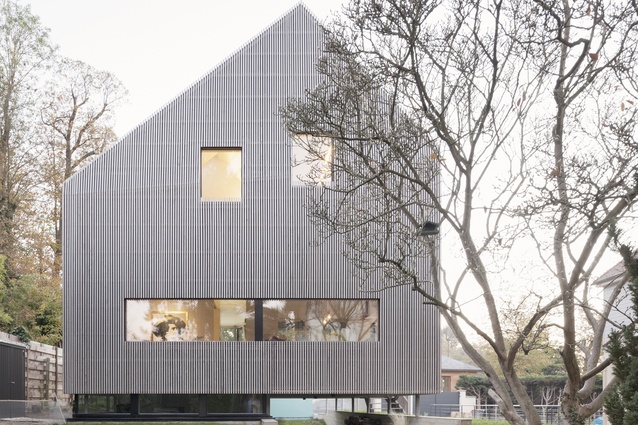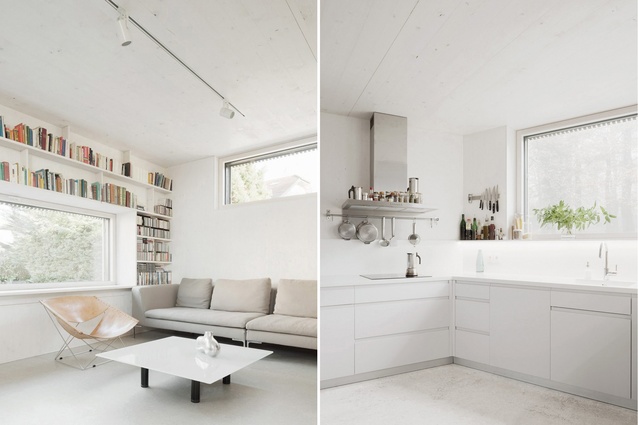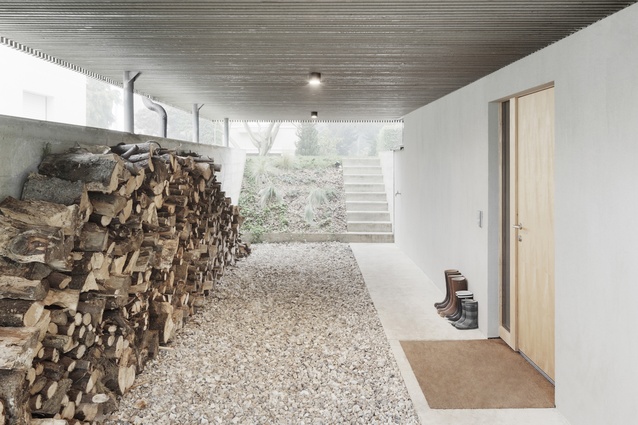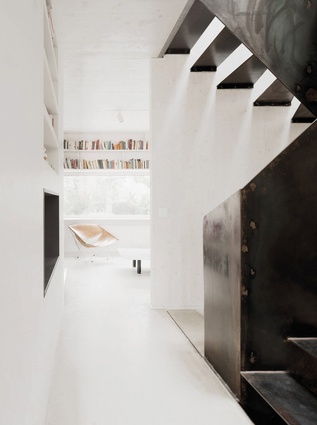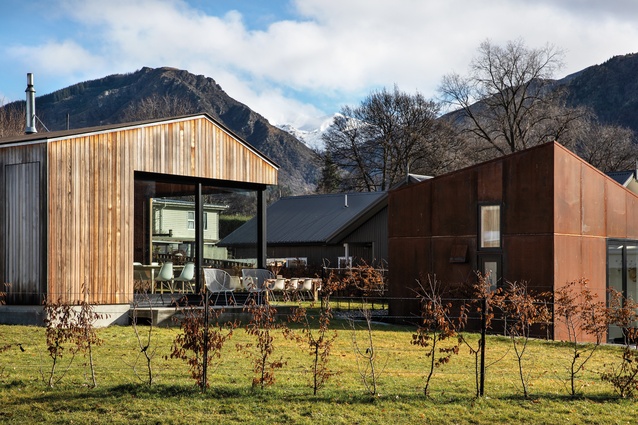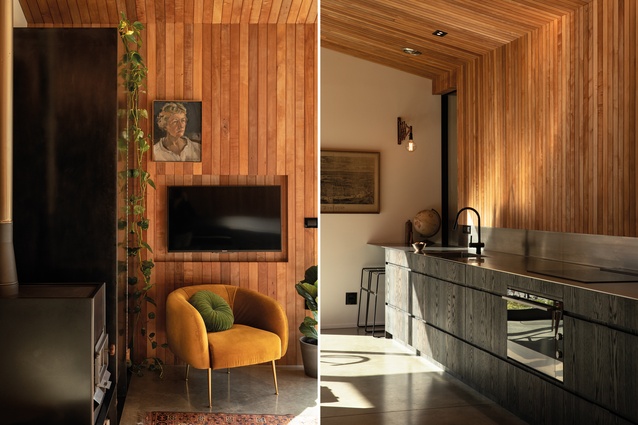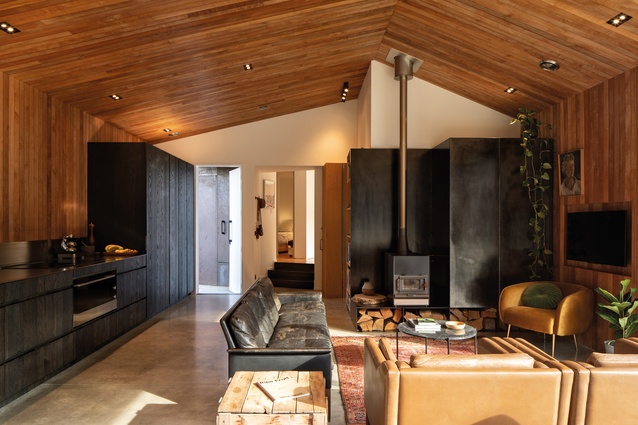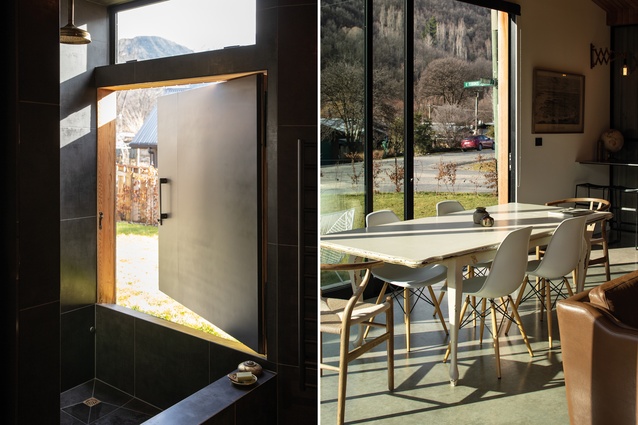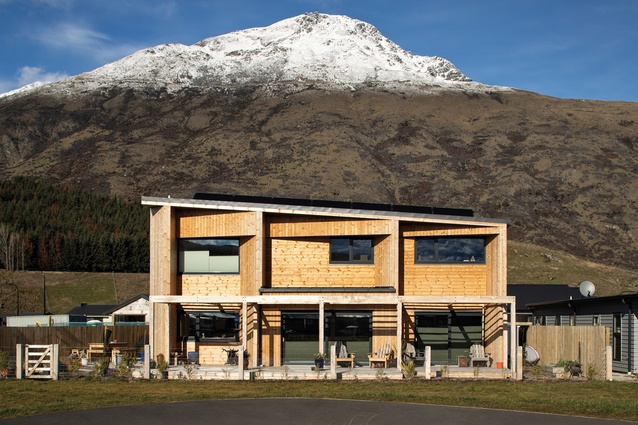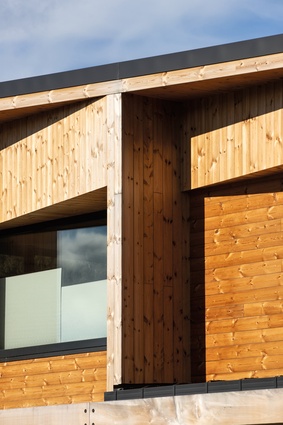The eco-ethical house: case studies
Take a look at three houses which were designed to be kind to the environment.
Case study 01: Maison Marly
Known as Maison Marly, this home in an historic suburb of Paris contrasts with the traditional peaked roofs of the surrounding neighborhood, creating a Passive House certified building with a playful, contemporary aesthetic that invites inspection from passers-by.
The architectural studio responsible for the design, Karawitz, is known in France for creating energy-efficient homes with character. Maison Marly uses pre-oiled grey larch cladding over wood-fibre insulation boards with a ventilated rainscreen to create a home of superior insulation and airtightness. The windows are triple glazed, increasing the internal warmth of the home so that one central fireplace is all that is needed for heating. A ventilation system with heat recovery redistributes warmth throughout the house, when needed.
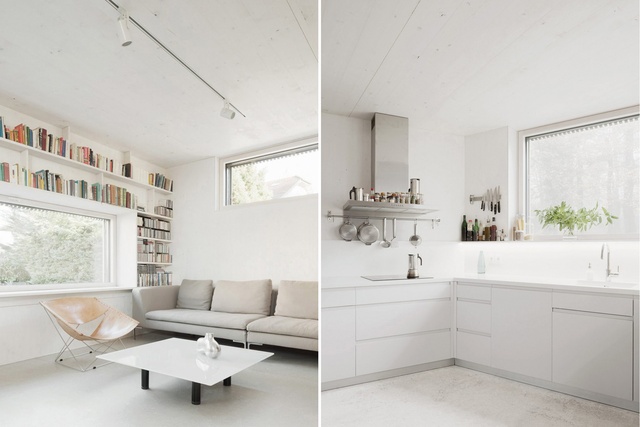
The building uses PEFC and FSC-certified raw materials in its timber construction, which helps it to meet Passive House requirements. The interiors have a monolithic appearance thanks to the use of whitewashed timber boards throughout. These have been treated with a natural stain, which ensures good vapour permeability and a reduction in static electricity, making for a pleasant interior climate.
The architects had to work around strict building guidelines that do not allow houses to overlook one another. To avoid this, but still obtain a sense of neighbourly connection, the house instead looks over the street, with galvanised steel fencing providing privacy. Upstairs, windows look up towards the sky or out to the garden. In a neighbourhood that is mostly defined by hedges and inward-gazing habitats, Maison Marly is a breath of fresh air.
Case study 02: Hofmans’ Crib
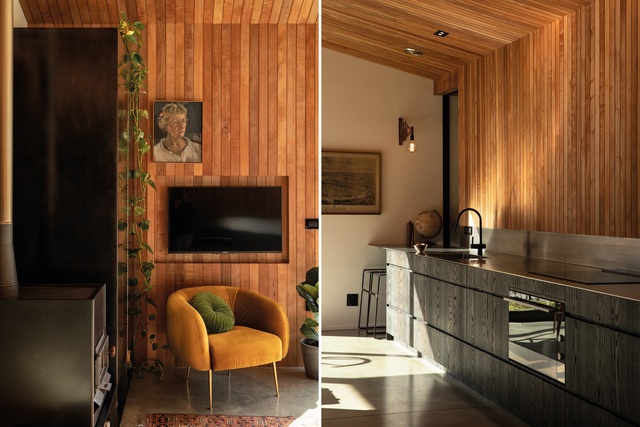
A small footprint will almost always tread more lightly on the earth than will a larger one and, when the footprint also reuses an old shoe, the tread will be lighter still. This house began as half the size it is now – but, even so, at its current size of 118m2, it is small – but not too small – for the family of four which occupies it.
This house is the Hofmans’ own home in Arrowtown, which was originally a crib of 55m2 that was intended only for summer use and was clad in asbestos. Hofmans Architects designed an extension that looks across to the beautiful Arrowtown hills beyond, and contains a living area, a kitchen and a hidden bathroom, accessible through an invisible door in the bookshelf.
They reconfigured the original spaces to make them multi-purpose. At the moment, they are pocket-sized bedrooms but they could also be used as offices or the sliding doors, which divide them, could remain open to make a larger space. “As the family changes so can the functionality of the spaces,” says Marteen Hofmans. The walls between these rooms double as storage, with inbuilt cabinets and cupboards.
The couple also built a small, self-contained guest house on the site of an old sleepout, for more sleeping options and guest accommodation. The exteriors of both the old and the new wings are clad in cedar, which wraps over the roof as well. The front door and the guest house are clad in Corten. This combination of materials sits well in the leafy, autumnal palette of Arrowtown.
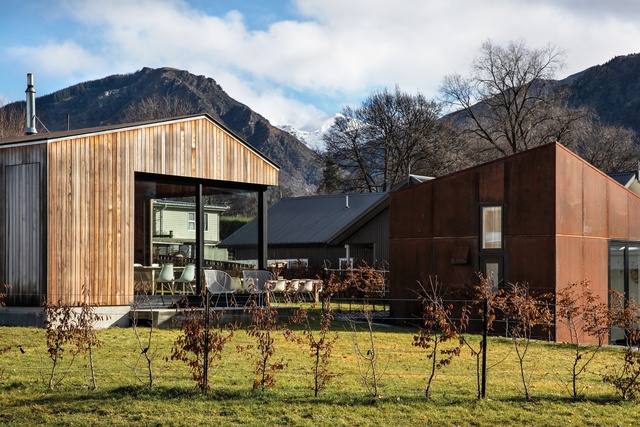
The original wooden floor was retained in the back half of the house, despite the extra cost involved, says Anna Rees-Hofmans. “Keeping the old floor was an undertaking but it felt right not to throw it away. The builders were working with the uneven floorboards and having to match the gib along uneven edges, which was time consuming but it was good to reuse what we could.”
To increase solar gain, the new section of the house has a concrete slab that also includes underfloor heating fed from a diesel boiler. The fire has a wetback for heating hot water and the house has a ventilation system that allows it to reuse heat and refresh the air; this is important in Arrowtown, which suffers from air pollution because chimney smoke is caught in the valley in the wintertime.
Southern beech, a sustainable local timber, was used for the ceilings. The kitchen bench stretches across the living area, becoming a desk space at the end closest to the sliding doors. “The kitchen is designed to appear more like a piece of furniture within the living area,” says Rees-Hofmans. “Because we design small, we generally make spaces multi-use.”
Case study 03: The Shotover House
The owners of this house in the new subdivision of Shotover Country in Queenstown approached Guy Shaw of Climate House to help them bring their dream of creating a passive house to reality. Shaw says that planning for a passive house begins with the usual, basic analysis of form, orientation and shading. “But, the difference is, when you start to look at the build envelope, you go into much finer detail and it’s really about engineering, comfort and energy efficiency. You have to think about airtightness, thermal bridging and high-performance windows. If you don’t do a good job at junctions, your thermal efficiency will be lost at the weak points.
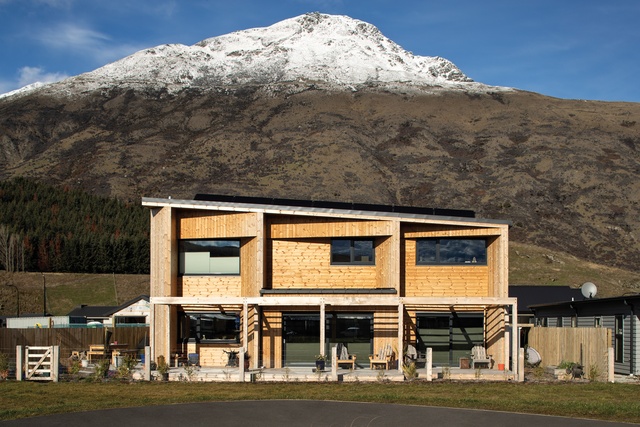
Most passive houses will have ventilation systems to ensure good air quality. This is important in homes such as this one, which are airtight. “In a passive house, it’s a no-brainer because you want balanced heat-recovery ventilation, which gives you efficiency as well as better air quality. In a normal house, you have a shower and, then, open a window and the heat from your shower is lost. With these systems, you keep the heat; it is recycled back into the system,” says Shaw.
So, is the capital involved in building a passive house returned by its efficiency? “It’s hard to tell as no one has built two identical houses side by side, with and without certification. Also, most passive houses are architecturally designed and this is likely to cause some distortion to the numbers. However, once you add up the items required, it doesn’t amount to that much extra. As long as the design is kept simple, creating a certified passive house should be economical,” says Shaw.
A version of this article first appeared in Houses magazine.


